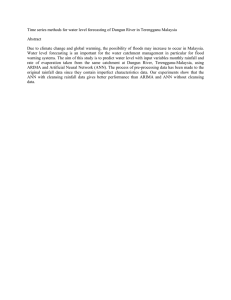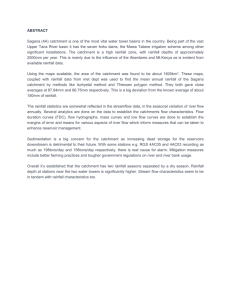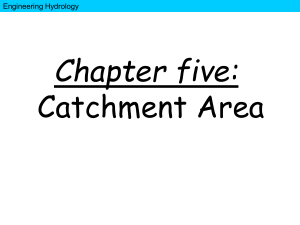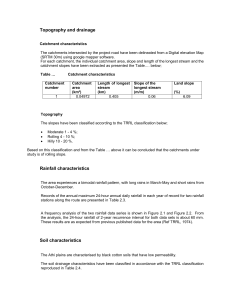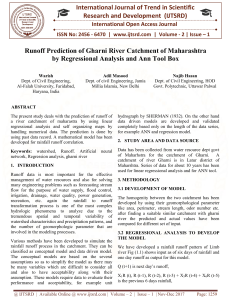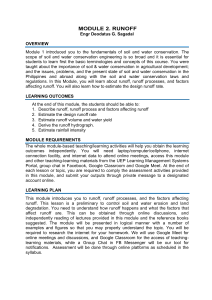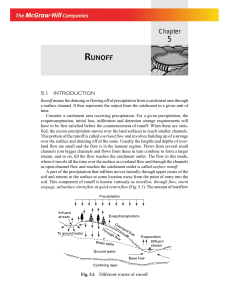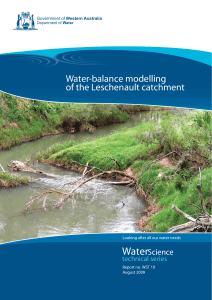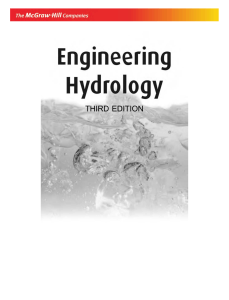Runoff contributing areas in a Mediterranean calcareous catchment (Alicante, Spain) A. Calvo-Cases
advertisement
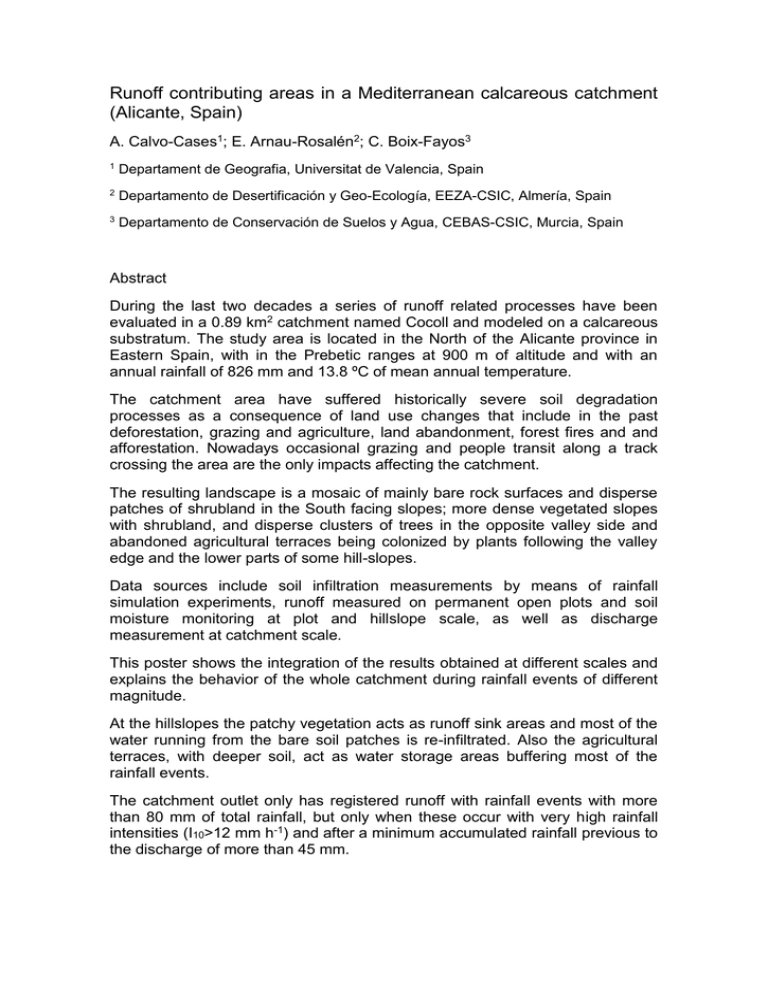
Runoff contributing areas in a Mediterranean calcareous catchment (Alicante, Spain) A. Calvo-Cases1; E. Arnau-Rosalén2; C. Boix-Fayos3 1 Departament de Geografia, Universitat de Valencia, Spain 2 Departamento de Desertificación y Geo-Ecología, EEZA-CSIC, Almería, Spain 3 Departamento de Conservación de Suelos y Agua, CEBAS-CSIC, Murcia, Spain Abstract During the last two decades a series of runoff related processes have been evaluated in a 0.89 km2 catchment named Cocoll and modeled on a calcareous substratum. The study area is located in the North of the Alicante province in Eastern Spain, with in the Prebetic ranges at 900 m of altitude and with an annual rainfall of 826 mm and 13.8 ºC of mean annual temperature. The catchment area have suffered historically severe soil degradation processes as a consequence of land use changes that include in the past deforestation, grazing and agriculture, land abandonment, forest fires and and afforestation. Nowadays occasional grazing and people transit along a track crossing the area are the only impacts affecting the catchment. The resulting landscape is a mosaic of mainly bare rock surfaces and disperse patches of shrubland in the South facing slopes; more dense vegetated slopes with shrubland, and disperse clusters of trees in the opposite valley side and abandoned agricultural terraces being colonized by plants following the valley edge and the lower parts of some hill-slopes. Data sources include soil infiltration measurements by means of rainfall simulation experiments, runoff measured on permanent open plots and soil moisture monitoring at plot and hillslope scale, as well as discharge measurement at catchment scale. This poster shows the integration of the results obtained at different scales and explains the behavior of the whole catchment during rainfall events of different magnitude. At the hillslopes the patchy vegetation acts as runoff sink areas and most of the water running from the bare soil patches is re-infiltrated. Also the agricultural terraces, with deeper soil, act as water storage areas buffering most of the rainfall events. The catchment outlet only has registered runoff with rainfall events with more than 80 mm of total rainfall, but only when these occur with very high rainfall intensities (I10>12 mm h-1) and after a minimum accumulated rainfall previous to the discharge of more than 45 mm.


